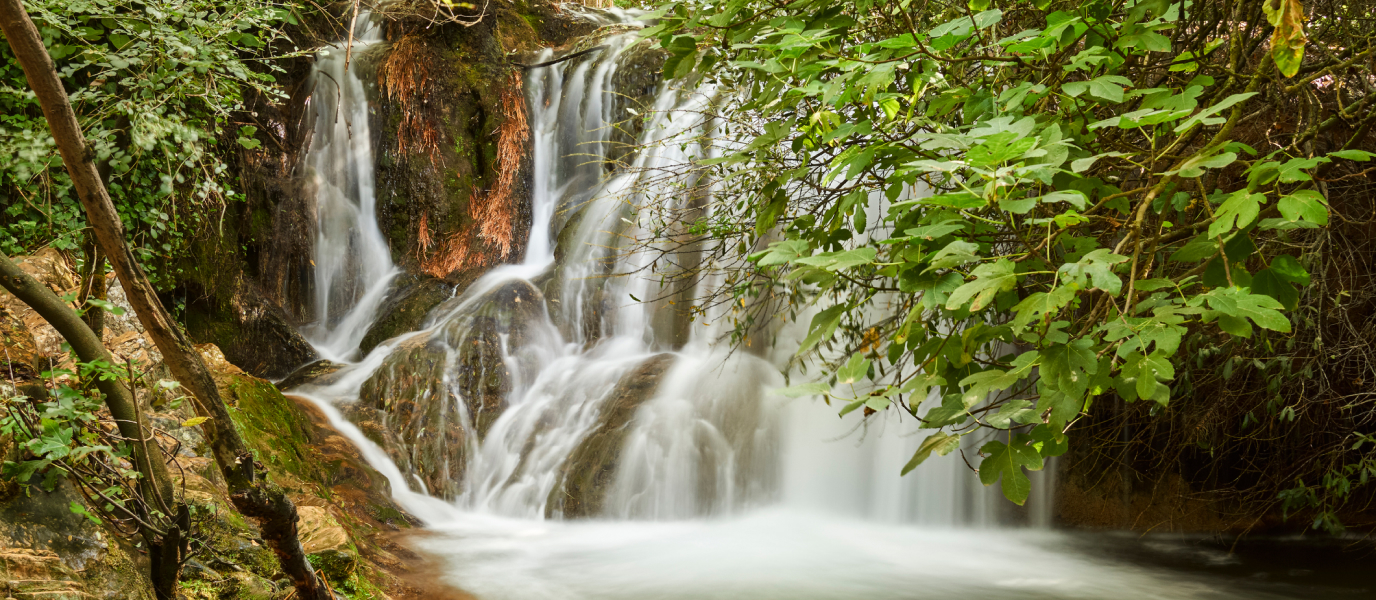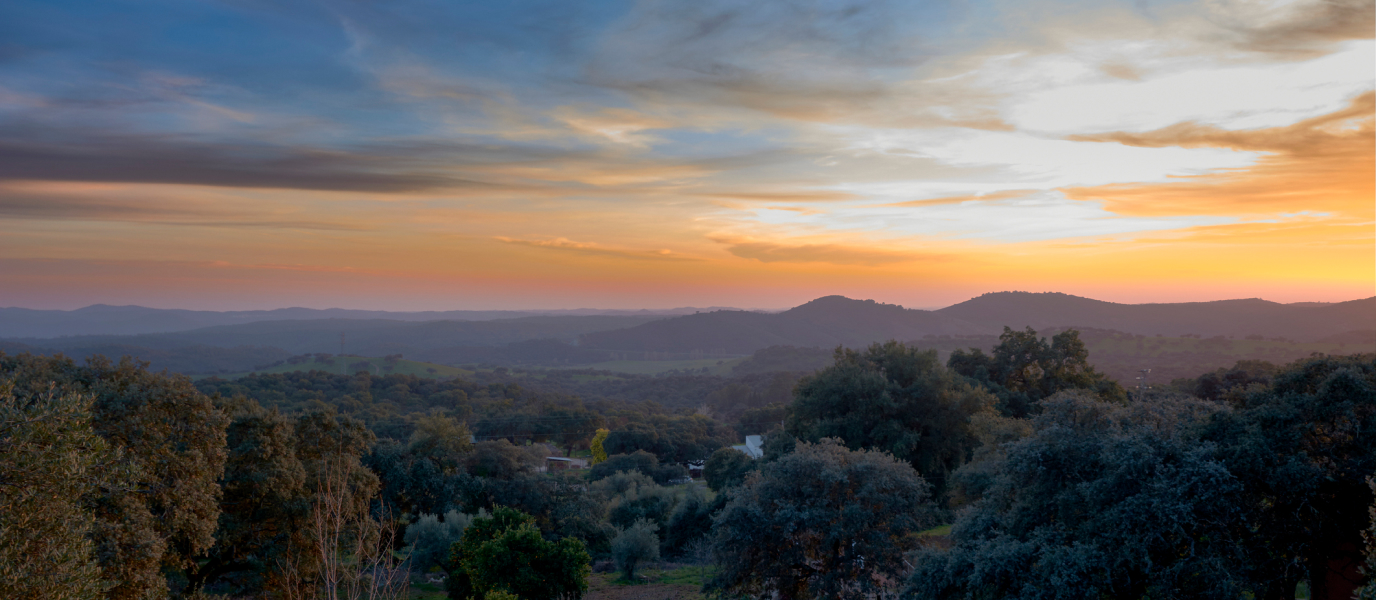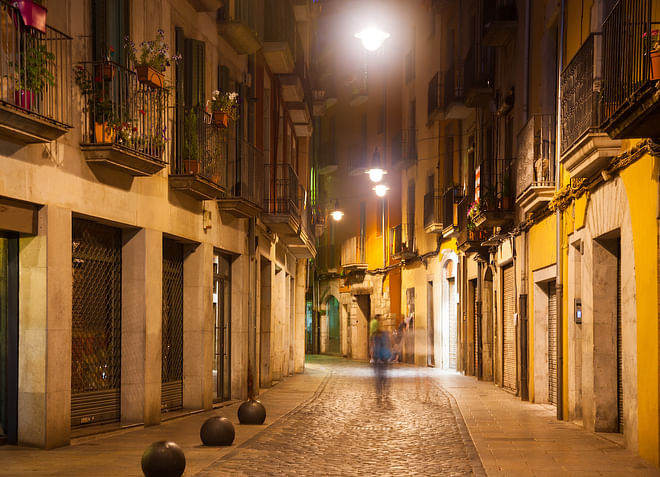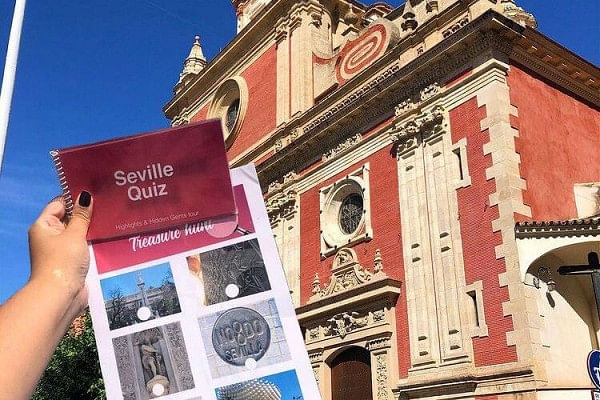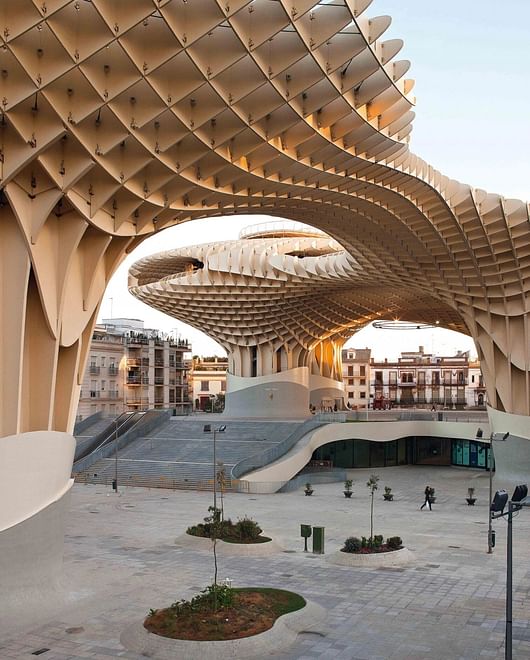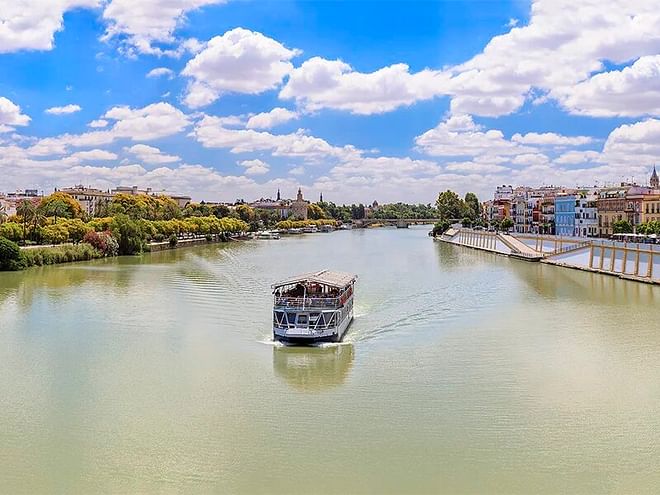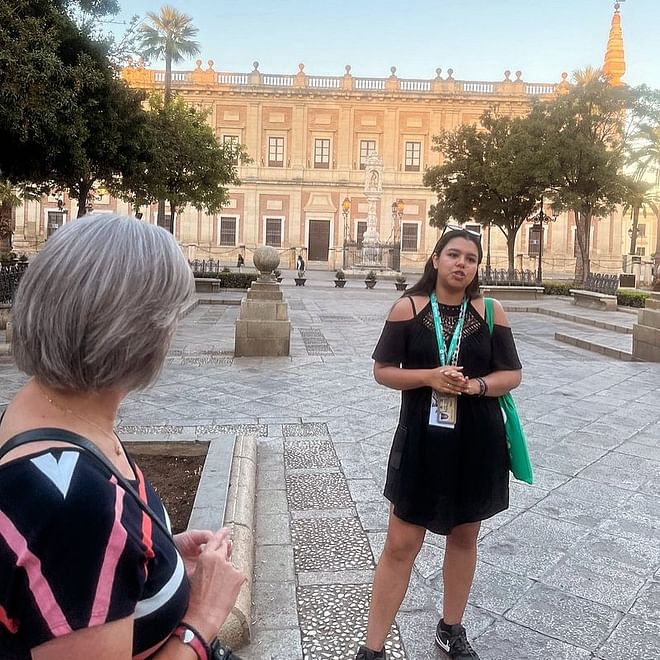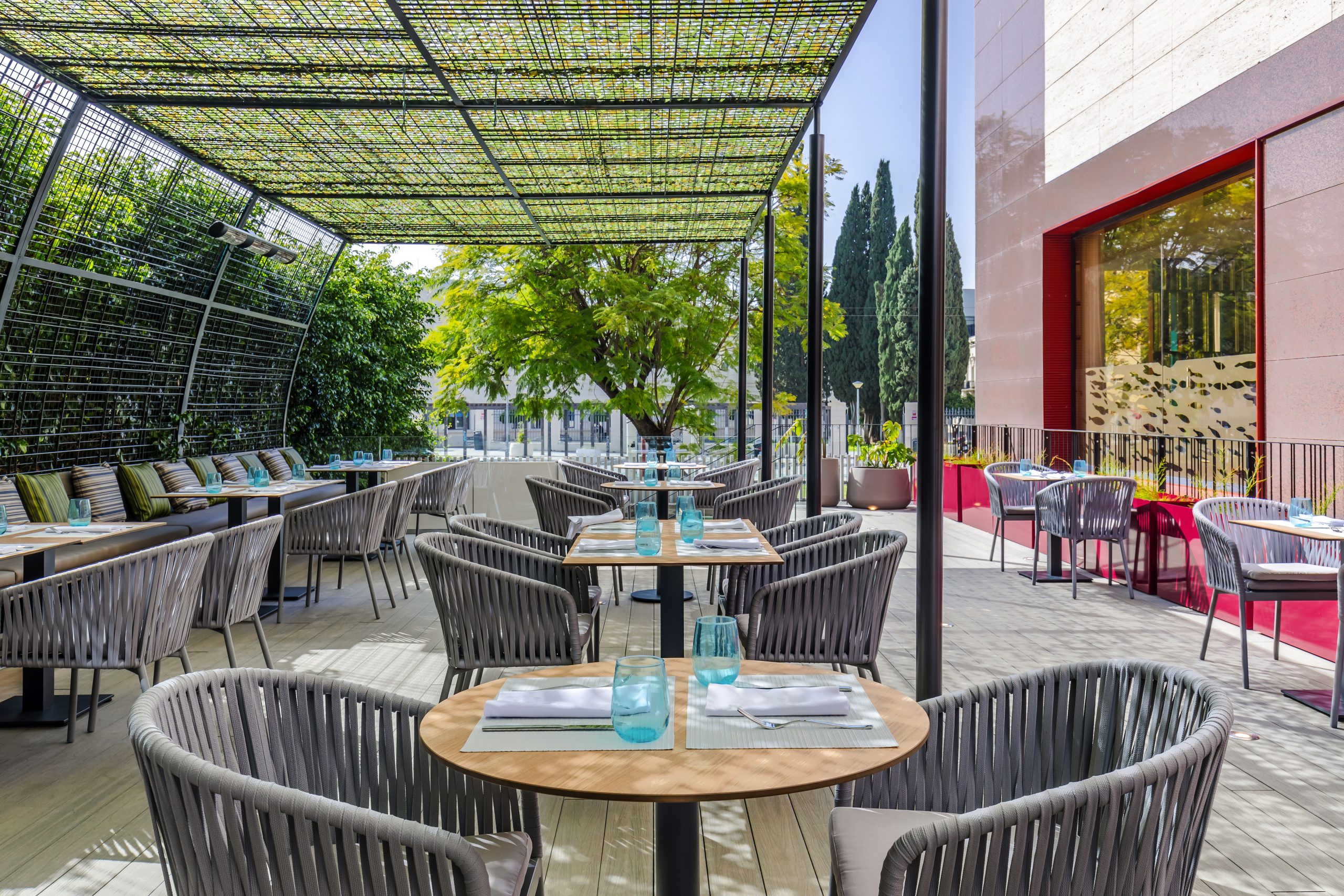In the southwest corner of the Iberian Peninsula, in a vast stretch that reaches into the Huelva, Cádiz and Seville provinces, lies what is considered to be the largest bioreserve in Europe. Known as Doñana National Park, this protected area whose rare location between two continents—Europe and Africa—is a valuable natural treasure. In the collective imagination of many people, it is viewed as a vast wetland ruled by flamingos and other bird species, but history has shown that Doñana is much more than this. The archaeological remains found on this land have highlighted its past as a valuable enclave for many ancient civilisations, from Neolithic settlements to the Tartessians, the Phoenicians and the Romans. This is also the location of the famous El Rocío pilgrimage, a centuries-old religious phenomenon that takes place in Huelva in early June, when many rocieros—the virgin’s devotees—make their way across the park’s dunes.
The Doñana region has been a UNESCO World Heritage Site since 1994, and a network of visitors centres throughout the park arranges guided tours to explore its trails. This is the starting point of our unique trip to the heart of the park, its origin and its present.
A wetland with centuries of history
In 1923, a German archaeologist set out to discover the largest Tartessian city of all, but instead he only found piles of sand. Over time, however, a number of archaeological remains have confirmed, in conjunction with ancient texts, the presence of Romans in Doñana along with their interest in the region’s fishing and salting resources.
Later, after the Moors were expelled in the thirteenth century, King Sancho IV transferred possession to Guzmán ‘the Good’—who founded the House of Medina Sidonia—marking the start of a 600-year period of noble ownership in Doñana. During this time, the successive dukes did not hesitate to exploit the land. Although agricultural efforts were unsuccessful due to the terrain’s marshy nature, the Doñana region would soon become the preferred hunting grounds for royals, including Duke Philibert of Savoy as well as the Spanish monarchs Philip IV, Philip V and Alfonso XII. However, this did not interfere with many other people of varied origin from sporadically passing through. As a transit point for shepherds, rociero pilgrims and soldiers, the inhospitable and isolated Doñana region was also used for centuries as a secret route for goods in order to evade Cádiz customs duties.
In 1900, the land ceased to be owned by the Medina Sidonia family. It was transferred to various noble owners until it was purchased by the State in 1963 and established as Doñana National Park. This brought an avalanche of expeditions led by many naturalists, whose conservation efforts throughout the decades have made it possible to visit Doñana in its purest state today.
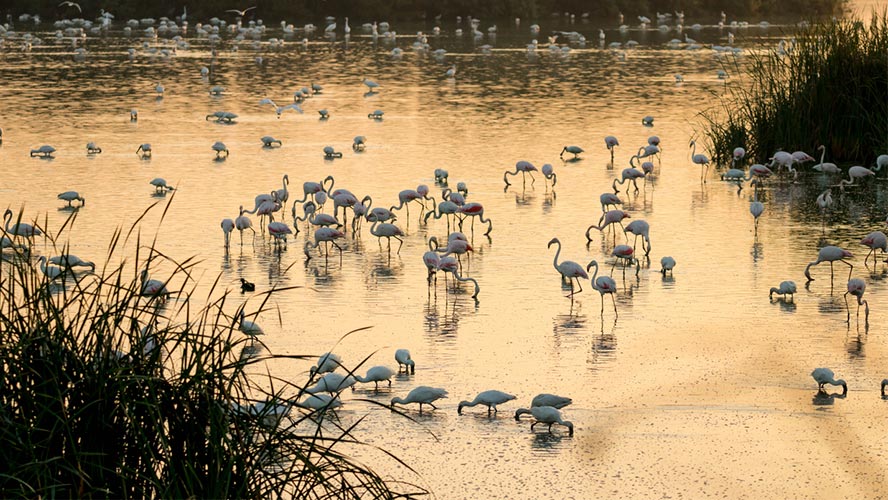
The park’s main attractions
Although its coastline is bathed by the Atlantic Ocean, Doñana’s climate is primarily Mediterranean, with rainy winters and dry summers. This regional crossroads is precisely what makes the park one of the largest nature reserves in Europe.
Throughout the year, more than 300 bird species make their way across this land, and many also use it as a place for incubation and raising their young. There is also a high number of mammals, including the Iberian lynx (on the verge of extinction), deer and wild boar; and countless reptile, amphibious and fresh-water fish species.
Doñana is also home to a surprising mosaic of ecosystems that coexist in less than 100,000 hectares, resulting in stunningly gorgeous landscapes. Here, a standard Mediterranean forest, sprinkled with wild pine trees and brush—such as rock rose and rosemary—lives alongside an extensive marshland bustling with waterfowl, and seas of moving sand dunes, such as Matalascañas.
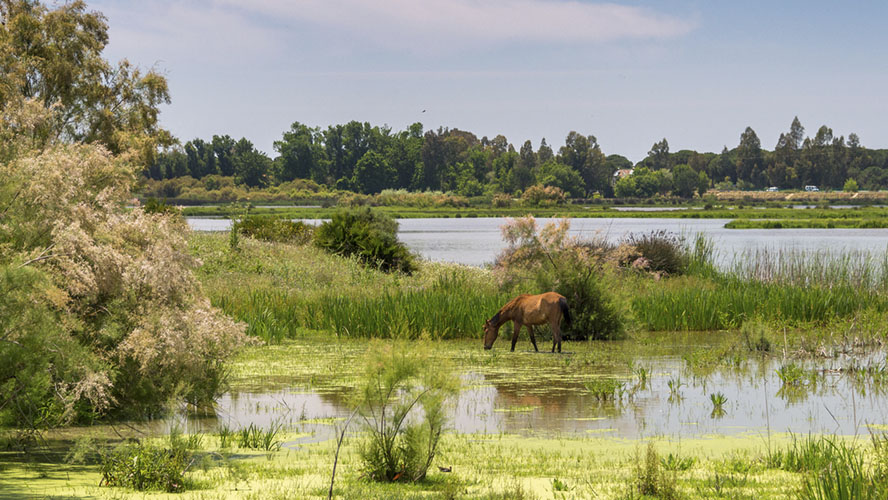
This natural wonder pairs perfectly with the 14 villages that line the protected area in Huelva, Cádiz and Seville. Almonte—which houses the famous hamlet of El Rocío where pilgrims meet every June—and Hinojos are great examples of the region’s traditional Andalusian architecture of white homes.
How to visit Doñana National Park
Although visitors are welcome to freely explore Doñana National Park on foot or bicycle, the best alternative is to hire a guided tour led by a professional. Doñana National Park, the heart of the landscape, and what is known as the preparque—or nature reserve—cover a total of 117,000 hectares, so a vehicle is needed to reach the various areas in a single day.
The El Acebuche Visitors Centre, located in Matalascañas along the coast, is one of the main entrances to Doñana Park. It operates in conjunction with the Cooperativa Marismas del Rocío, one of the largest companies specialised in guided tours of the park. The tours last approximately four hours and are done in 4×4 vehicles with a driver-guide, who shows visitors the ecosystems mentioned earlier along with how they were traditionally used. Prices range from €42 for groups to €180 for private tours, and both include lunch.
The Ice House Visitors Centre (Sanlúcar de Barrameda), located right on the mouth of the Guadalquivir River, and the Acebrón Palace Visitors Centre, in the hamlet of El Rocío, are the two other main entrances to the park. There are also companies that provide guided tours at these facilities.
For a different type of experience, visitors can also ride up the Guadalquivir River from Sanlúcar in the Real Fernando, a lovely ship whose funnel and shape are reminiscent of traditional steam boats. Along the route, passengers learn about the region’s historical and geomorphological aspects, and the historical importance of the river itself.






























































